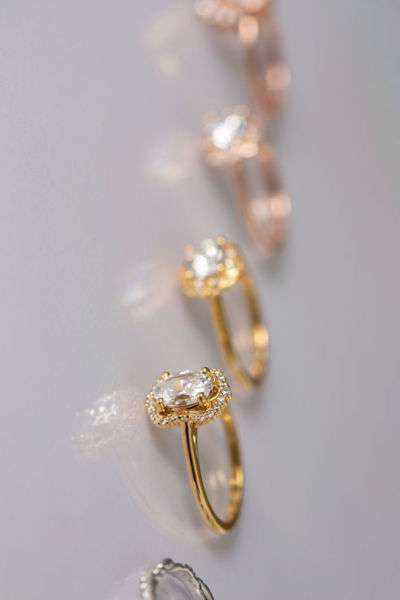Introduction
Buying a diamond can be one of the most important decisions you make in your life, so it’s important to have the right knowledge when making that decision. Like buying a home, you’ll want to make sure there are no surprises in what you are purchasing.
Fortunately, systems of diamond grading have been developed to help both sellers and customers discern the qualities and characteristics of diamonds. Familiarizing yourself with these systems will guarantee a more informed purchasing decision, which will leave you confidence in your buy.
These grading systems are standardized: They remain unbiased and are created by a third-party laboratories. Keep in mind that these rankings systems are helpful for understanding a diamond’s characteristics and aren’t intended to prescribe which characteristics are “better.”
What makes a diamond special is simply the opinion of the viewer. A certified gemologist can help you with a depersonalized analysis of a diamond’s characteristics and assist you with your decision to buy a diamond. If you would like to get started with this process, contact us and we will gladly help you out.
History of Diamond Grading

The methods of diamond-grading have developed alongside the science of diamond-crafting, which has a long history. Early on, diamond-grading standards were not unified and varied between wholesalers and retail stores. Eventually, two laboratories specializing in grading diamonds narrowed down the standards that are used to convey diamond characteristics today. Even with these standardizations in place, these diamond-grading methods continue to develop. A skilled and certified gemologist will be up-to-date on the latest trends as to best serve partners and customers alike.
There are two largely-used grading systems used today:
GIA Grading Methods
The GIA diamond-grading system is universally-used for determining a diamond’s characteristics, and are at least somewhat-familiar for most people. These grading methods are known as the “4C’s.” The four C’s are cut, color, clarity, and carat weight.
Cut determines a diamond’s crafted shape.
Color determines a diamond’s color, which can range from completely colorless, to yellows and browns, to exotic colors such as blues and pinks.
Clarity determines a diamond’s amount of mineral contaminations.
Carat determines the size of the diamond. Large gems are rarer than small ones.
More information on the 4C’s can be found on their respective pages.
AGS Grading Methods
The GIA Grading System was designed for those in the diamond trade, but is not ideal for the common person. Because of this, the AGS system was developed for the consumer in mind.
The American Gem Society’s system rates each of the 4C’s on a 0-10 scale. 0 denotes the highest grade and 10 denotes the lowest grade. This means the lower the number, the higher the quality is of that diamond’s feature.
This is especially useful for evaluating the first of the four C’s—a diamond’s cut. Due to little differences in their formation, diamonds look different even when cut identically, so it’s important to figure out which cut will be best for a specific diamond specimen. This is both a science and an art. The AGS is at the forefront of this technology and has been pivotal for determining the factors of diamond quality.
